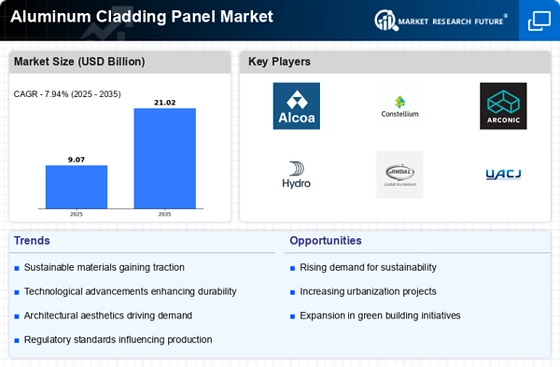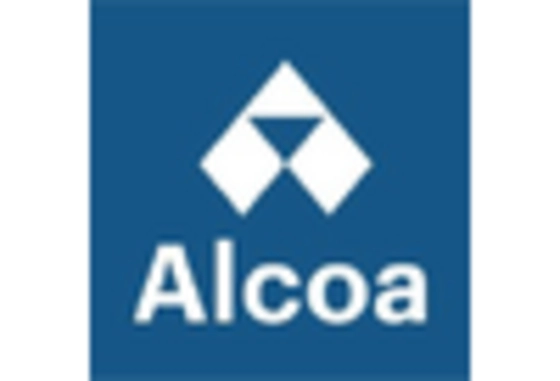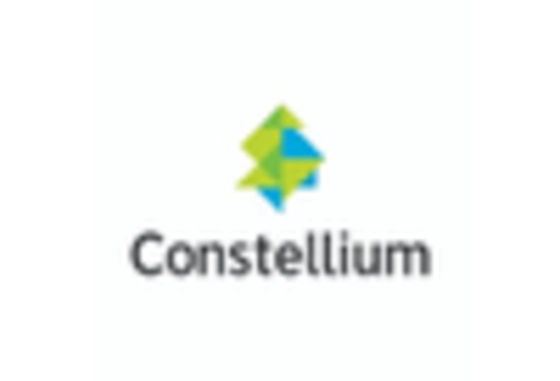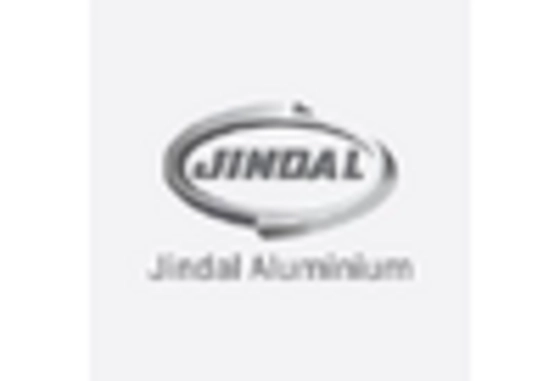The Aluminum Cladding Panel Market is currently characterized by a dynamic competitive landscape, driven by factors such as increasing urbanization, a growing emphasis on energy efficiency, and the rising demand for aesthetically pleasing building materials. Key players in this market, including Alcoa (US), Constellium (NL), and Novelis (US), are strategically positioning themselves through innovation and regional expansion. Alcoa (US) has focused on enhancing its product offerings with advanced aluminum solutions, while Constellium (NL) emphasizes sustainability in its manufacturing processes. Novelis (US), on the other hand, is leveraging its recycling capabilities to meet the growing demand for sustainable materials, thereby shaping a competitive environment that prioritizes eco-friendly practices alongside product quality.
In terms of business tactics, companies are increasingly localizing manufacturing to reduce lead times and optimize supply chains. This approach appears to be particularly effective in a moderately fragmented market where regional players also exert influence. The collective strategies of these key players suggest a trend towards consolidation, as companies seek to enhance their market share and operational efficiencies through strategic partnerships and acquisitions.
In August 2025, Alcoa (US) announced a significant investment in a new manufacturing facility in the Midwest, aimed at increasing its production capacity for aluminum cladding panels. This move is likely to bolster its competitive edge by enabling faster delivery times and reducing transportation costs, thus enhancing customer satisfaction. Furthermore, this facility is expected to incorporate advanced technologies that align with Alcoa's commitment to sustainability, potentially setting a new standard in the industry.
In September 2025, Constellium (NL) entered into a strategic partnership with a leading architectural firm to develop innovative aluminum cladding solutions tailored for high-rise buildings. This collaboration is indicative of Constellium's focus on innovation and design, allowing it to tap into new market segments while reinforcing its reputation as a leader in sustainable building materials. The partnership may also facilitate the integration of cutting-edge design elements that appeal to modern architectural trends.
In July 2025, Novelis (US) launched a new line of aluminum cladding panels that utilize 100% recycled materials, further solidifying its position in the sustainability arena. This initiative not only meets the increasing regulatory demands for eco-friendly products but also resonates with consumers' growing preference for sustainable building materials. The introduction of this product line is expected to enhance Novelis's market share and attract environmentally conscious clients.
As of October 2025, the competitive trends in the Aluminum Cladding Panel Market are increasingly defined by digitalization, sustainability, and the integration of advanced technologies such as AI. Strategic alliances are becoming more prevalent, as companies recognize the need to collaborate in order to innovate and meet evolving market demands. Looking ahead, it appears that competitive differentiation will increasingly shift from price-based competition to a focus on innovation, technological advancements, and supply chain reliability, thereby reshaping the market landscape.


















Leave a Comment